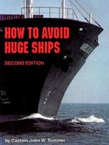US87891
Posts: 422
Joined: 1/2/2011
Status: offline

|
Our small scenario rules are rules in the classical sense. They are not house rules, but "the" rules. They are soft and flexible because we use umpires who understand that rules are guidelines for a commander and sometimes need to be broken under critical circumstances. But the rules are the paradigm.
I think of rules as one might think of rules in a miniatures situation. AE is a computer game and many people think that a computer will handle every and all situation that comes up, and if you can do something that the computer allows, it is valid, because who's to say. In a miniatures fleet problem, what's to prevent someone from simply picking up the models of a BC division and placing it 2000y from the opposing carriers and start rolling dice. Nothing. The rules are silent on that kind of behavior. So just because a computer program allows something doesn't mean that it is valid either. Our scenarios are meant for people who wish to delve deeply into the treasures of operational experience and logistical imperatives. There is no way to "win" a DBB scenario. There is only do, or do not; learn, or learn not.
First part, naval TF rules.
Naval Units
.. Task Forces and Ships – This is substantially the same as sections 6.1 and 6.2 of the manual. However, there are additional restrictions to the number and types of ships that can make up certain Task Forces. This is the general case, but particular scenarios may have scenario specific additions and/or revisions.
.. .. Air Combat Task Forces
The TF composition can vary by time period. An ACTF has a maximum of 2 aircraft carriers (of any type) until 1/43, when it may have a maximum of 3, with a further maximum restriction of 2x CVA and 1x CVL. Multiple ACTFs may operate in the same hex, and in concert, but may not be combined into a TF with a CV count >2 (or 3, post 1/43). The rule is based on USN and IJN operational concepts of Carrier Division (CarDiv) and Task Force/Group composition and leadership.
ACTFs are not interoperable by nationality. A US ACTF must only comprise US carriers. Likewise a UK ACTF must only comprise UK carriers. Different nationality ACTFs may operate in the same hex, and in concert, but they must maintain their national internal identity. Both doctrinal and logistic incompatibilities require this rule.
.. .. Amphibious Task Forces
Allied AmphTFs are for the purpose of assaulting enemy bases. An AmphTF may only comprise AK and AP type ships, along with associated LST/LSI/etc vessels. An ordinary x-type vessel may never be included in an AmphTF for any reason. After they become available, AKA and APA ships may substitute for AK/AP.
IJN AmphTFs may only comprise AK/AP types and specific xAKs that have been converted to carry troops and are specifically listed as xAK-t. An ordinary x-type vessel may never be included in an AmphTF for any reason. For the IJN, an AmphTF comprising xAK-t types should include some AK/APs in order to obtain an unload assist.
.. .. Transport Task Forces.
TransTFs move ground units and supply from point-to-point, between friendly bases .They may neither assault nor act in support of an assault. Allied TransTFs are normally comprised of xAP types. The Allied side may use xAK types for ground units in a TransTF but on a restricted basis.
The restriction rule is somewhat complex and depends on circumstances.
a. For moderate length transport of a typical infantry battalion, or an equivalent sized unit, up to 2 xAKs may be used for the unit without invoking the restriction.
b. Where the unit cannot fit on 2 xAKs, the rule defaults to requiring an xAP.
c. For every xAP in the TF, the player may include up to 2 xAKs.
However, air groups should preferentially load on xAKs for transport. An xAK carrying an air group is not counted against the rule.
Japan is unrestricted in its use of unconverted xAKs for transporting units in a TransTF.
More later. Matt
|
 Printable Version
Printable Version



















 New Messages
New Messages No New Messages
No New Messages Hot Topic w/ New Messages
Hot Topic w/ New Messages Hot Topic w/o New Messages
Hot Topic w/o New Messages Locked w/ New Messages
Locked w/ New Messages Locked w/o New Messages
Locked w/o New Messages Post New Thread
Post New Thread